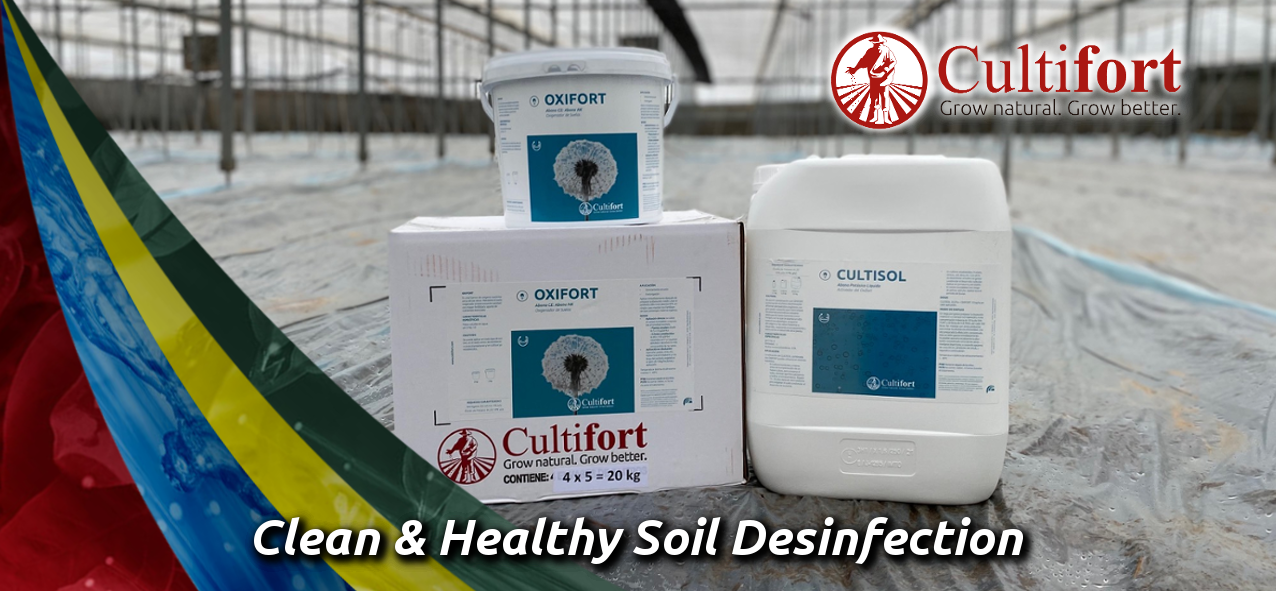The control of soil pathogens in intensive production systems is not a simple practice. Disinfection with chemical and non-chemical products is currently the most common practice for the control of soil pathologies in most horticultural crops. However, the dynamics of repetition, season after season, of the use of certain chemical soil disinfectants has led to their prohibition.
These prohibitions and restrictions pose a challenge for farmers, having to adapt their management with new soil disinfection strategies. In addition to chemical alternatives, many others have been and are being evaluated, including solarization, alone or in combination with other soil pathogen control methods.

The joint action of OXIFORT and CULTISOL is proposed as a clean and healthy soil disinfection solution, free of residues, environmentally friendly and non-toxic and non-corrosive. The synergy between both products contributes to increase their disinfectant action, increasing the power of both through the formation of organic peroxyacids, with a higher oxidizing and disinfectant power, which guarantees the elimination of soil pathogens without having to resort to fumigants, pollutants, corrosive and very expensive. The application of both products can be done together with solarization, first applying OXIFORT and then CULTISOL, finishing with a brief irrigation to ensure the infiltration of the products in the first centimeters of the soil so that they fulfill their disinfectant function.
In view of the results obtained in the soil analyses carried out with COEXPHAL’s Labcolor laboratory, before and after solarization, we can affirm that the joint treatment strategy of OXIFORT + CULTISOL has been effective for the control of Fusarium oxysporum and Fusarium solani.
Therefore, for a more effective treatment and due to the high permanence and survival of Fusarium and Pythium in soil, greenhouse structures, tools and machines, the following prevention measures are also recommended: eliminate or destroy crop residues, choose resistant cultivars or varieties, use clean and disinfected tools and propagation/planting materials, use clean substrates, prevent plant stress, control greenhouse temperature, do not overwater and make sure soil drainage is adequate, control nitrogen applications (preferably nitric to ammoniacal), improve healing of pruning and/or harvest wounds and prevent plant diseases, optimizing plant potential as well as crop resilience.


